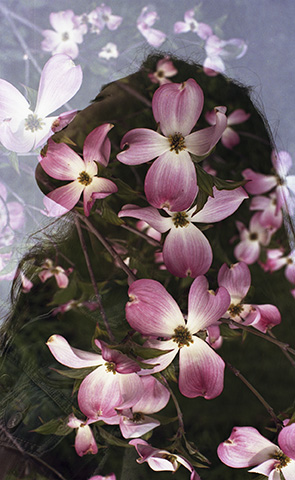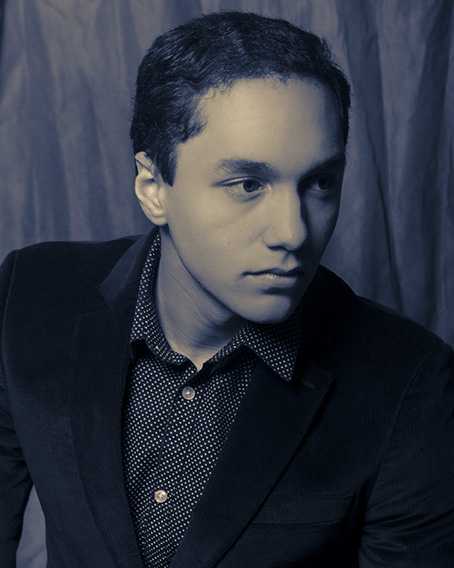Always seen carrying a camera around his neck, Adham Davenport is an Unmanned Aerial Systems (UAS) major with a passion for photography.
Davenport originally wanted to be a photographer, but he switched to UAS for practical reasons.
“Looking more into it the amount of work you put into [photography] to get X amount of money is pretty crazy,” he says. “It’s not as stable as something that’s a technical job.”
Davenport said that before he became interested in photography, he wanted to be a pilot. He flew his first plane before he could even drive a car.
 “I’ve actually taken two flying lessons,” Davenport said. “I flew an airplane when I was 14 and landed it four times in my first lesson.” His interest in flying led him to search for images of space.
“I’ve actually taken two flying lessons,” Davenport said. “I flew an airplane when I was 14 and landed it four times in my first lesson.” His interest in flying led him to search for images of space.
“I wanted to take photos like that,” he said. “So, one day I just asked my dad ‘hey, can I use your camera?’ He was like ‘sure.’ So, I just picked it up and started taking photos.”
Davenport says he enjoys photography because it involves sharing moments with other people. He points out the interesting conversations you can have with people on the streets.
“There was one homeless person I was talking to, and they wanted me to take their picture,” he says. “I just think they didn’t want to be forgotten. That was just the kind of look they had on their face in the photo.”
Davenport also likes that there is accuracy and truth within a photograph.
“[With] drawing, you can create without being there, but with photography you can actually go there and experience it,” he said. “If I want to take a picture of the desert, I can go to the desert. I’ll know what the sand feels like. I’ll know what the air smells like.”
This is what draws Davenport to landscapes and people, which he says are his favorite subjects. He describes people as simply being “one of the most interesting things in the world.”
Guadalupe Aviles, a Visual Communications major and Davenport’s girlfriend, said she likes how Davenport can capture a person in a good moment.
“He would ask me to stay still and in the next five seconds he takes a photo and shows me something beautiful and different [about] me,” Aviles says.
Davenport says he also likes landscape photography because of the slow, self-paced aspect.
“I like landscapes because it’s tedious,” Davenport said. “You’re just out there with a camera taking photos when you want, how you want. I like waiting outside because I like seeing the environment change.”
Aviles said she feels Davenport is “expressing the way he sees the world” through his photography.
“It’s amazing how he finds beauty in things I never thought there was.” she said. “It keeps you wondering ‘is there more beauty than just this.”
Joel Borgemenke, Davenport’s friend, says, “Adham is expressing his creativity, and his art inspires me to think more freely [about] the world around me.”
“I get a sense of imagination melded together with reality [when I see his photos],” Borgemenke added.
Davenport calls himself a hybrid photographer because he shoots with both digital and film.
“[With film,] I love the mechanics of it,” he said. “It’s like driving a vintage car. Yeah, the 2016 whatever is going to be better than my 1960 Mustang, but the Mustang just feels so nice to drive.”
He says he likes digital photography for more technical reasons.
“I like getting those sharp, crisp photos or taking photos in dark rooms with just natural light,” he said. “I get immediate results.”
Davenport says he would like to continue working with landscapes and people, but he also wants to explore documentary and war photography, as well as working on movie sets.
“I want to see every bit of the human condition there is,” he said. “It’s the truth. It’s not a rendition. It shows you exactly what it is. It’s like ‘this is what humans are.’”
Davenport said he’s interested in set photography because he would get to work with people and travel.
“Once again, it’s the experience,” he said. “If you’re a set photographer, and the movie is going to be shot in [another country,] you get to go there. It adds a bit of adventure.”
Davenport feels it’s important to take photos of things that interest you and people you love.
Aviles says that shows in Davenport’s work, as well.
“If you noticed the people he takes photos of you would be able to tell who he cares about and how much. His photos show his emotion towards [them,]” she says.
If you want to stay connected and see more of Davenport’s work, he updates his Flickr account regularly. He is also available on Facebook and Instagram.
Brittany Fletcher
Creative Director


